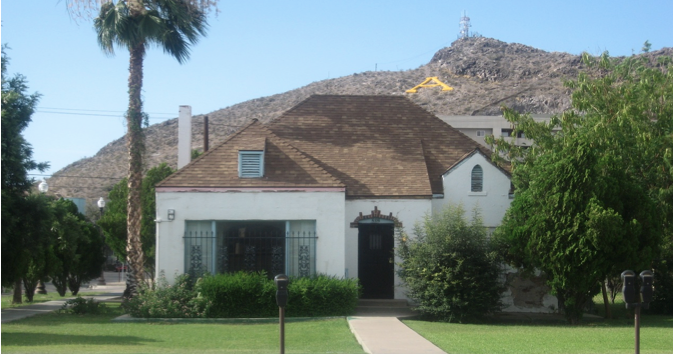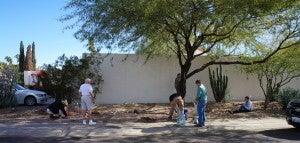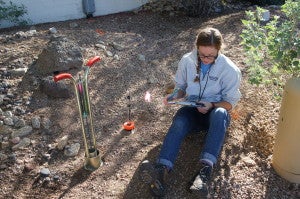
Socio-ecological outcomes of residential landscape management and design
 How and why do people choose particular landscape types and management practices in their yards?
How and why do people choose particular landscape types and management practices in their yards?
How do these landscape types and management practices affect people and ecological processes?
Although a relatively small area globally, intensively managed urban landscapes are increasingly prevalent worldwide. Turfgrass lawns are now the largest irrigated crop in the U.S. (Milesi et al. 2005), covering 10-16 million hectares and contributing to high rates of water and fertilizer use. In the US West, increasingly scarce freshwater resources are prompting cities to offer incentives to homeowners to convert their lawns to water-efficient, ‘sustainable’ landscapes with native plants and drought-tolerant shrubs and trees (often called xeriscapes or rain gardens) . These water-wise socio-ecosystems are designed to look like natural semi-arid or Mediterranean landscapes but are highly managed with drip irrigation and raking, weeding, and pruning. Despite the growing importance of these designed landscapes and potential policy implications, little is known about how diverse homeowner practices impact ecological processes and how, in turn, residential ecosystem characteristics affect human behavior.
One of the questions we are currently exploring is: What are the ecological outcomes of landscape conversation from turfgrass lawn to water-wise lawn alternative yards? Replacement of turfgrass lawn with native or drought-tolerant vegetation leads to numerous social-ecological benefits such as water conservation, decreased fertilizer use, aesthetic beauty, and support of native biodiversity. However, turfgrass lawns also contain high concentrations of soil nutrients in a dense network of roots, similar in magnitude to intensively managed agricultural soils. When lawn grasses are replaced with mulch ground cover with interspersed shrubs and trees, soil nutrients that are left behind may inadvertently become mobile, with potentially negative consequences for water quality. To better understand the ecological consequences of this increasingly popular land cover change, we are characterizing plant communities and soil nutrient dynamics across a choronosequence of residential landscape conversion in Tempe, AZ.
Read more about our broader project as a Research Highlight of the CAP LTER.
- Shuster, W.D., S.D. Dadio, C.E. Burkman, S.R. Earl, and S.J. Hall. 2015. Hydropedological assessments of parcel-level infiltration in an arid urban ecosystem. Soil Science Society of America Journal, doi:10.2136/sssaj2014.05.0200.
- Marusenko, Y., D.P. Huber, and S.J. Hall. 2013. Fungi mediate nitrous oxide production but not ammonia oxidation in arid and semi-arid soils. Soil Biology and Biochemistry, 63: 24-36.
- Boone, C., E. Cook, , S.J. Hall, N.B. Grimm, C. Raish D. Finch, M. Nation, and A. York. 2012. A comparative gradient approach to understanding and managing urban ecosystems. Urban Ecosystems, DOI 10.1007/s11252-012-0240-9.
- Cook, E., S.J. Hall, and K. Larson. 2011. Residential landscapes in an urban socio-ecological context: Multi-scalar drivers and legacies of management practices, ecological structure, and ecosystem services. Urban Ecosystems, DOI 10.1007/s11252-011-0197-0.
- Larson, K.L., E. Cook, C. Strawhacker, and S.J. Hall. 2010. The influence of diverse values, ecological structure, and socio-spatial context on residents’ multifaceted land-management decisions. Human Ecology, DOI 10.1007/s10745-010-9359-6.
- Davies, R. and S.J. Hall. 2010. Direct and indirect effects of urbanization on soil and plant nutrients in desert ecosystems of the Phoenix metropolitan area. Urban Ecosystems, 13 (2). DOI: 10.1007/s11252-010-0120-0.
- Hall, S.J., B. Ahmed, P. Ortiz, R. Davies, R. Sponseller, and N.B. Grimm. 2009. Urbanization alters soil microbial functioning in the Sonoran Desert. Ecosystems, 12: 654–671, DOI: 10.1007/s10021-009-9249-1.
- Hall, S.J., D. Huber, and N.B. Grimm. 2008. Soil N2O and NOx emissions from an arid urban ecosystem. Journal of Geophysical Research-Biogeosciences, (113), G01016, doi:10.1029/2007JG000523.
CAP LTER: NSF-DEB 0423704




